In depth information on addiction by Gary W. Smith
 Whether a person is genetically or bio-chemically predisposed to addiction or alcoholism is a controversy that has been debated for years within the scientific, medical and chemical dependency communities. One school of thought advocates the “disease concept”, which embraces the notion that addiction is an inherited disease, and that the individual is permanently ill at a genetic level, even for those experiencing long periods of sobriety.
Whether a person is genetically or bio-chemically predisposed to addiction or alcoholism is a controversy that has been debated for years within the scientific, medical and chemical dependency communities. One school of thought advocates the “disease concept”, which embraces the notion that addiction is an inherited disease, and that the individual is permanently ill at a genetic level, even for those experiencing long periods of sobriety.
Another philosophy argues that addiction is a dual problem consisting of a physical and mental dependency on chemicals, compounded by a pre-existing mental disorder (i.e. clinical depression, bipolar disorder, or some other mental illness), and that the mental disorder needs to be treated first as the primary cause of the addiction. A third philosophy subscribes to the idea that chemical dependency leads to “chemical imbalances” in the neurological system.
The fact remains that there is scientific research to support all of these concepts, but that none of these theories are absolute. Based on national averages we have a 16% to 20% recovery rate. The message is clear that we have a lot more to learn if we are to bring the national recovery rate to a more desirable level.
There is a 4th school of thought, which has proven to be more accurate. It has to do with the life cycle of addiction. This data is universally applicable to addiction, no matter which hypothesis is used to explain the phenomenon of chemical dependency.
The life cycle of addiction begins with a problem, discomfort or some form of emotional or physical pain a person is experiencing. The person finds this very difficult to deal with.
Here is an individual who, like most people in our society, is basically good. He has encountered a problem or discomfort that he does not have the ability to resolve. This could include problems such as difficulty “fitting in” as a child or teenager, anxiety due to peer pressure, identity problems or divorce as an adult. It could also include physical discomfort, such as a broken arm or a bad back.
The person experiencing the discomfort has a real problem. He feels this problem is a major situation that persists and he can see no immediate resolution or relief from it.
We have all experienced this in our lives to a greater or lesser degree. The difference between which one of us becomes an addict and which one does not depends on whether or not, at the time of this traumatic experience, we are subjected to pro-drug or alcohol influences via some sort of significant peer pressure when the problem is manifesting itself. The painkilling effects of drugs or alcohol become a solution to the discomfort because the person experiences relief from the negative feeling associated with the problem.
As soon as the addict experiences relief from the discomfort, he inadvertently attaches value to the drug or drink, because it helped him feel better. Even though the relief is only temporary, it is adopted as a solution to the problem and this assigned value is the only reason the person ever uses drugs or drinks a second, third or more times. At this point, it is just a matter of time before the person becomes fully addicted and loses the ability to control their drug use.
Part Two – The Barriers to Successful Recovery
Once an addict has been through treatment there are three main reasons for relapse: 1) mental and physical cravings; 2) depression; and 3) guilt associated with the moral degradation and dishonesty that becomes part of an addict’s life style. These manifestations can haunt someone for years after they have sobered up and more times than not, if left untreated, will trigger a relapse. These unresolved symptoms, whether physical or mental in origin, create an underlying, low-level type of stress, which cannot be completely ignored by the addict. The addict can “just say no” a thousand times, but it only takes him saying “yes” one time to start the cycle of addiction again.
The first barrier to successful recovery from substance abuse is overcoming the mental and physical cravings for the drug of choice. Drugs and alcohol are broken down and filtered in the liver. There is a byproduct from this detoxification process called a metabolite. These protein-based metabolites can and do find their way into the person’s body fat. Keep in mind that each time anyone has ever used a drug or alcohol, they have a complete recorded memory of that life experience. Whether good times or bad, happy or sad, all emotions, feelings and sensations that were present at the time the drug or alcohol was ingested is filed away in the person’s memory. Even if a person is in a blackout, the experience is still recorded in the mind. So each metabolite is connected to a memory of the life experience related in some way to the drugs or alcohol at the time they were consumed.
The body will metabolize and burn fat any time a person undergoes a life experience that causes the heart rate to speed up. Stress can do this, as can strenuous exercise or intense emotion. We all experience these things on a fairly regular basis.
When an addict experiences these life situations and their heart rate speeds up the body begins to mobilize and burn fat. The fat contains toxins or metabolites from past alcohol and drug use. As the fat cell burns, it releases the metabolite back into the person’s blood stream.
The metabolite is a byproduct of the drug. That metabolite is connected to the memory of the life experience in which the drug or alcohol was taken. The toxin finds its way back into the blood stream and acts as both a physical and mental reminder of the drug or alcohol consumption. It also acts as a reminder of the emotional effect the person experienced after consumption.
In short, the toxin re-enters the blood and triggers or stimulates a physical reminder of the drug or alcohol and the memory of feelings, thoughts, sensations and emotions connected to that experience. The person remembers feeling and thinking like they did in the past when they were under the influence and so are prone to relapse at these times.
The reactive compulsion to continue to use drugs or alcohol is, in part, caused by the drug’s interaction with the body’s natural chemistry. Some of the body’s natural chemicals act as a built-in reward system that encourages us to eat exercise and procreate. Other natural body chemicals act as natural painkillers that activate when we physically injure ourselves. In short the natural chemicals are directly related to our physical survival and or well-being.
As a person’s addiction develops the brain and body identify the drug as an aid that either enhance the release of or replace these natural chemicals. As the person starts to use chemicals on a regular basis, the body becomes depleted of key nutrients and amino acids. Amino acids are the building blocks for natural chemicals called neurotransmitters. These nutritional deficiencies prevent the body from receiving the nutritional energy necessary to produce the natural chemicals. The brain gets fooled as it has identified the drug or drink as an aid to releasing or replacing the natural chemicals. This is what causes the uncontrolled compulsion an addict feels to continue to use. This compulsion is so strong within the individual that the desire to use more drugs or drink overrides the negative and often times life-threatening consequences an addict is faced with on a day to day basis. The drug or alcohol gets misidentified as an aide to the production and release of the natural chemicals when in fact it is suppressing the body’s ability to manufacture neurotransmitters.
Part Three – The Barriers to Successful Recovery
Guilt is another component in the life cycle of addiction. Most addicts are basically good people before they become addicts and have some sense of right and wrong with no intention of hurting others. As they become dependent on the chemical, they begin experiencing situations where they are doing and saying things they know deep down aren’t right. They begin to lose their ability to control themselves. They become trapped in a vicious circle of using drugs, lying about it, stealing to support more drug use and at each turn the addict is accumulating memories of each these negative incidents.
The addict commits a negative action; he records a memory of that moment, which includes whoever he was involved with at the time. The addict knows these negative actions are wrong and so feels bad about them after the fact.
These memories of guilt can then get triggered in the present or future when he sees the people and places that were involved when the transgressions were committed in and they feel bad about it. In time these transgressions are committed more and more often and the people in the addict’s life where these transgressions have occurred become “triggers” of the dishonest act or deed. The people, family members, loved ones and friend’s appearance to the addict triggers the guilt. Family or friends don’t necessarily have to say a word to the addict; just the sight of them can trigger the guilt. To avoid these unpleasant guilt feelings, the addict will use more drugs to insulate himself from the guilt.
The addict will also begin to withdraw more and more from friends and family as the transgressions committed by the addict increase in number. They will eventually pull away from the family, seclude themselves and/or become antagonistic towards those they love.
Part Four – Overcoming the Barriers to Recovery
Cravings, depression and guilt make up the harness that keeps an addict in the downward spiral of drug addiction. In almost all cases these symptoms are generated after a long term of substance abuse.
So then what is the best approach to tear down these barriers to successful recovery? Remember cravings are the first barrier to recovery. These are caused by drug or alcohol residues that store primarily in body fat in the form of metabolites. And as mentioned in an earlier article, metabolites are the byproduct of the body trying to digest and breakdown the toxin once ingested into the system. These metabolites are connected to memories the addict has of the time and experience associated with ingestion of the chemical. These metabolites will activate at times when the addict’s metabolism increases. Once the metabolite activates, an uncontrollable urge to use more drugs overcomes the addict. The active metabolite triggers or reminds the addict at a physical and mental level of drug use.
There are a number of methods that are being used today to address the fat storage aspect of drugs. Some include intravenous ascorbic acid (Vitamin C) treatments another is fasting. More and more we are seeing the emphasis being shifted to holistic treatments as a significant component of substance abuse treatment planning. One of the most effective means of ridding the body of drug metabolites has proven to be the use of aerobic exercise combined with a nutritional program that utilizes Vitamin B3 (niacin) and extended periods of sweating in a dry sauna. This detoxification method was researched and developed by L. Ron Hubbard in 1978 and has helped increase the rate of recovery by eliminating the physical triggers that create drug cravings. It is this process called The New Life Detoxification Program that is utilized at the Narconon drug and alcohol rehabilitation program.
Depression is another one of the barriers to recovery. The depression an addict experiences is two fold. There is a chemical imbalance that drug and alcohol abuse creates in the body. Drug and alcohol abuse inhibits the production of natural body chemicals and in some cases replaces them. This impacts the natural reward system that encourages our physical well-being or eliminates pain after an injury. This biophysical aspect of the chemical imbalance present in drug abusers is driven by nutritional efficiencies that occur when someone uses drugs or alcohol on a regular basis. In most cases the emotional depression that an addict experiences follows after a person comes off drugs or alcohol not before. This is because of the declining quality of life an addict experiences and a decayed state of health. In most cases an addict has alienated themselves from family members and loved ones. There is often criminal behavior that comes about from the need for money to purchase drugs. Depending on the degree and type of drug abuse an addict frequently finds himself in trouble with the law. Addicts don’t want these situations to occur but cannot control the circumstances in their lives. As broken relationships or legal problems develop, the addict feels down or bad about these situations and will display characteristics of depression or lethargy.
Remember that all addicts are basically good people before the addiction begins. They start encountering problems brought on by their addiction. Then they get involved in the arduous task of trying to hide or cover up the deeds that led to these problems. At this point they begin to feel guilty. This guilt then causes the addict to withdraw from family, loved ones and friends or they will become antagonistic towards those close to them who do not abuse drugs or alcohol. This anti-social behavior is a direct result of his or her wrong doings and dishonest life style.
In order to remove these barriers to successfully recovery, addicts must experience a positive change in moral values. They must get honest-which is probably the toughest part of recovery. As a general rule people do not enjoy admitting their wrongs. This process is particularly difficult for the person who is addicted. However, the age-old basic premise of effective counseling still holds true – “confession is good for the soul.” This is certainly true in remedying drug or alcohol addiction. If an addicted person can confess honestly their sins and can make up the damage that was done by committing these sins, he will experience tremendous relief. They will not feel guilty any longer and will be able to better calculate how to improve their quality of life.
Part Five – Overcoming the Barriers to Recovery
There are different methods utilized in substance abuse counseling to bring about positive moral change in an addict. Probably one of the most commonly used is the 12 Step approach practiced by the Alcoholics or Narcotics Anonymous groups. In this method steps 4 and 5 and steps 8 and 9 deal with life inventory of the wrong deeds done and who was effected by them. In addition to this the addict then makes up the damage done as a result of these negative actions. This method is effective in recovery so long as the person’s addiction has not progressed to the point where the individual has lost his or her ability to confront and communicate or to identify and solve problems. If an addiction persists long enough, an addict will lose even the basic social skills needed to perform in group therapy and to admit their wrong doing. In cases where drug addiction began in the adolescent years, individuals have not had the opportunity to develop these life skills. As a result, they do not perform as well in a 12 step program or other traditional treatment settings. In these cases the addict needs to be educated or reeducated in these basic life skills before there can be any real hope of success in raising moral standards and permanent sobriety.
When conventional approaches are not working with a drug addicted person there are effective alternatives to pursue in recovery before one gives up. What has not proven effective is substitute drug treatment e.g. methadone, anti-depressants or other prescribed medications designed to mask the symptoms of addiction mentioned in this article. This in effect just trades one addiction for another. It does not aid the addicted person in developing the life skills necessary to raise their moral values or their quality of life. Nor does it provide them with the necessary tools to remain sober and so relapse becomes immanent.
One effective alternative method to recovery is the life skills training and moral inventory used by the Narconon program. This program provides a specific course of treatment which includes training in communication, a full body detoxification process, counseling in problem identification and solving, as well as counseling in personal values and integrity. These programs help individuals to accomplish heightened moral standards and sobriety with an improved quality of life.
Over 30 years ago author and researcher L. Ron Hubbard identified the basic barriers to successful recovery which have been discussed throughout this series of articles on addiction. Through his research he developed a means of treating them successfully. When Narconon was founded in 1969 by William Benitez it was based on Mr. Hubbard’s research and developments in the field of drug and alcohol rehabilitation. Benitez developed a working relationship with Hubbard and together they established the first Narconon program in Arizona.
Narconon has been using this treatment method successfully for over 30 years. It has only been within the last 5 or 6 years that the scientific and medical research have caught up with these methods of treating addiction. It is now acknowledged by the medical community that drugs do store in the body in the form of metabolites and that the chemical imbalances created by drug addiction are nutritionally driven. Further nutritional program components have been added to just about every type of treatment method and is recognized as a valid form of therapy in chemical dependency treatment.
If you now someone in need of help, I recommend that you research all of your treatment options. Take the time to thoroughly inspect the treatment program available. Determine how these programs address the mechanics of addiction. Find out what their long term recovery rate is. Drug rehabilitation does not have to be a revolving door if you take the time and effort to pick the right recovery program.
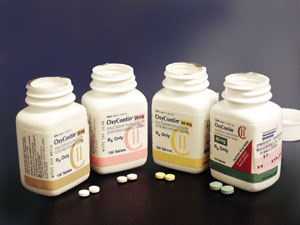 OxyContin is the brand name for an opioid analgesic containing the active ingredient oxycodone (also found in Percocet and Percodan). OxyContin is a legal narcotic that is available by prescription to treat severe pain. OxyContin is a controlled-release medication that, when used correctly, provides extended relief of pain associated with cancer, back pain, or arthritis. However, often when the drug is abused, the tablets are crushed and snorted, chewed, or mixed with water and injected. This eliminates the time-release factor and allows for a quick and intense rush of the drug to the brain. This practice can lead to overdosing on OxyContin’s active ingredient, oxycodone, by releasing too much of the medication into the bloodstream too quickly. OxyContin is highly addictive which means that higher doses of the drug must be taken when a tolerance develops. Illicit use of the drug has risen drastically and steadily over the last few years.
OxyContin is the brand name for an opioid analgesic containing the active ingredient oxycodone (also found in Percocet and Percodan). OxyContin is a legal narcotic that is available by prescription to treat severe pain. OxyContin is a controlled-release medication that, when used correctly, provides extended relief of pain associated with cancer, back pain, or arthritis. However, often when the drug is abused, the tablets are crushed and snorted, chewed, or mixed with water and injected. This eliminates the time-release factor and allows for a quick and intense rush of the drug to the brain. This practice can lead to overdosing on OxyContin’s active ingredient, oxycodone, by releasing too much of the medication into the bloodstream too quickly. OxyContin is highly addictive which means that higher doses of the drug must be taken when a tolerance develops. Illicit use of the drug has risen drastically and steadily over the last few years.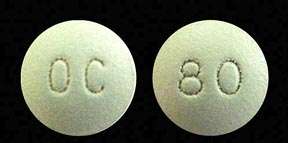
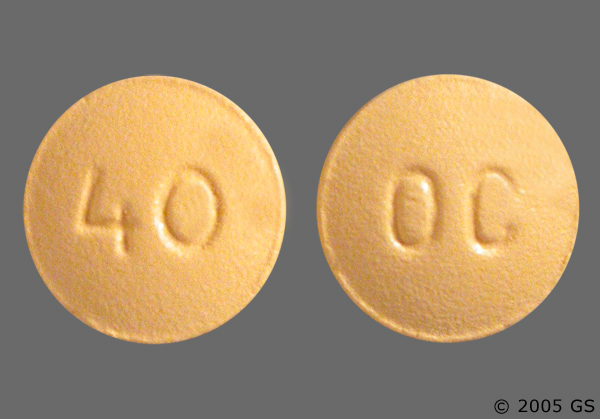

 Cocaine is a stimulant, which means it speeds up the brain and nervous system. The effects that people get from cocaine are related to the amount they have, which can vary significantly. Cocaine has both a pain killing effect because it blocks the transmission of pain impulses from the nerves to the brain, and a “high” because it stimulates and energizes people to greater alertness, intensifying their mood. Cocaine looks like white powder and can be smoked, snorted and injected.
Cocaine is a stimulant, which means it speeds up the brain and nervous system. The effects that people get from cocaine are related to the amount they have, which can vary significantly. Cocaine has both a pain killing effect because it blocks the transmission of pain impulses from the nerves to the brain, and a “high” because it stimulates and energizes people to greater alertness, intensifying their mood. Cocaine looks like white powder and can be smoked, snorted and injected.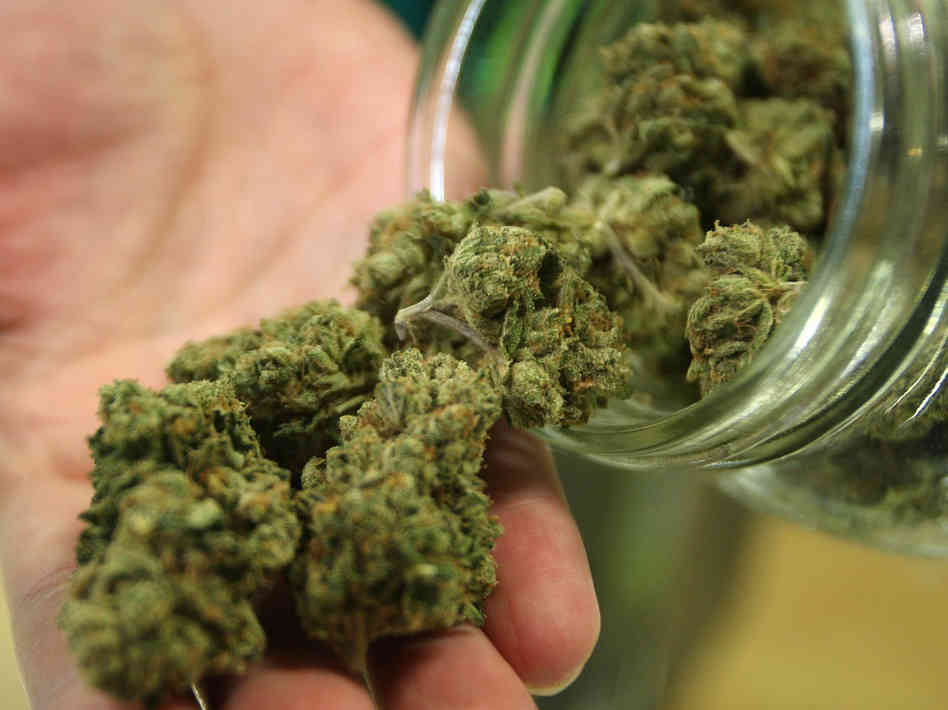 Marijuana is usually smoked as a cigarette (joint) or in a pipe. It is also smoked in blunts, which are cigars that have been emptied of tobacco and refilled with marijuana. Since the blunt retains the tobacco leaf used to wrap the cigar, this mode of delivery combines marijuana’s active ingredients with nicotine and other harmful chemicals. Marijuana can also be mixed in food or brewed as a tea. As a more concentrated, resinous form it is called hashish, and as a sticky black liquid, hash oil.* Marijuana smoke has a pungent and distinctive, usually sweet-and-sour odor.
Marijuana is usually smoked as a cigarette (joint) or in a pipe. It is also smoked in blunts, which are cigars that have been emptied of tobacco and refilled with marijuana. Since the blunt retains the tobacco leaf used to wrap the cigar, this mode of delivery combines marijuana’s active ingredients with nicotine and other harmful chemicals. Marijuana can also be mixed in food or brewed as a tea. As a more concentrated, resinous form it is called hashish, and as a sticky black liquid, hash oil.* Marijuana smoke has a pungent and distinctive, usually sweet-and-sour odor. Alcohol affects people differently depending on their size, sex, body build, and metabolism. General effects of alcohol are a feeling of warmth, flushed skin, impaired judgment, decreased inhibitions, lack of muscular in coordination, slurred speech, and memory and comprehension loss. In states of extreme intoxication, vomiting is likely to occur and may be accompanied by incontinence, poor respiration, and a fall in blood pressure. In cases of severe alcohol poisoning coma and death can occur.
Alcohol affects people differently depending on their size, sex, body build, and metabolism. General effects of alcohol are a feeling of warmth, flushed skin, impaired judgment, decreased inhibitions, lack of muscular in coordination, slurred speech, and memory and comprehension loss. In states of extreme intoxication, vomiting is likely to occur and may be accompanied by incontinence, poor respiration, and a fall in blood pressure. In cases of severe alcohol poisoning coma and death can occur.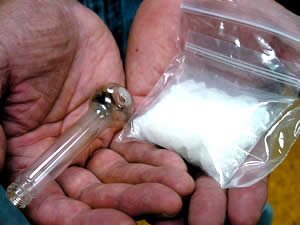 Widely available in the 1960’s, meth faded in the ’70s, as controls were tightened on legal production, which reduced its diversion onto the black market. But in the early ’90s, meth made a huge comeback. Since then its popularity has been rising and it is currently the most widely abused deadly drug used.
Widely available in the 1960’s, meth faded in the ’70s, as controls were tightened on legal production, which reduced its diversion onto the black market. But in the early ’90s, meth made a huge comeback. Since then its popularity has been rising and it is currently the most widely abused deadly drug used.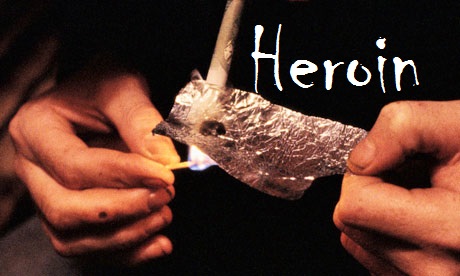 Heroin has made a comeback. As if the current epidemic of prescription painkillers wasn’t enough, addicts are finding pure heroin cheaper and easier to get than ever before. As a result heroin is getting more and more media attention.
Heroin has made a comeback. As if the current epidemic of prescription painkillers wasn’t enough, addicts are finding pure heroin cheaper and easier to get than ever before. As a result heroin is getting more and more media attention. Whether a person is genetically or bio-chemically predisposed to addiction or alcoholism is a controversy that has been debated for years within the scientific, medical and chemical dependency communities. One school of thought advocates the “disease concept”, which embraces the notion that addiction is an inherited disease, and that the individual is permanently ill at a genetic level, even for those experiencing long periods of sobriety.
Whether a person is genetically or bio-chemically predisposed to addiction or alcoholism is a controversy that has been debated for years within the scientific, medical and chemical dependency communities. One school of thought advocates the “disease concept”, which embraces the notion that addiction is an inherited disease, and that the individual is permanently ill at a genetic level, even for those experiencing long periods of sobriety.